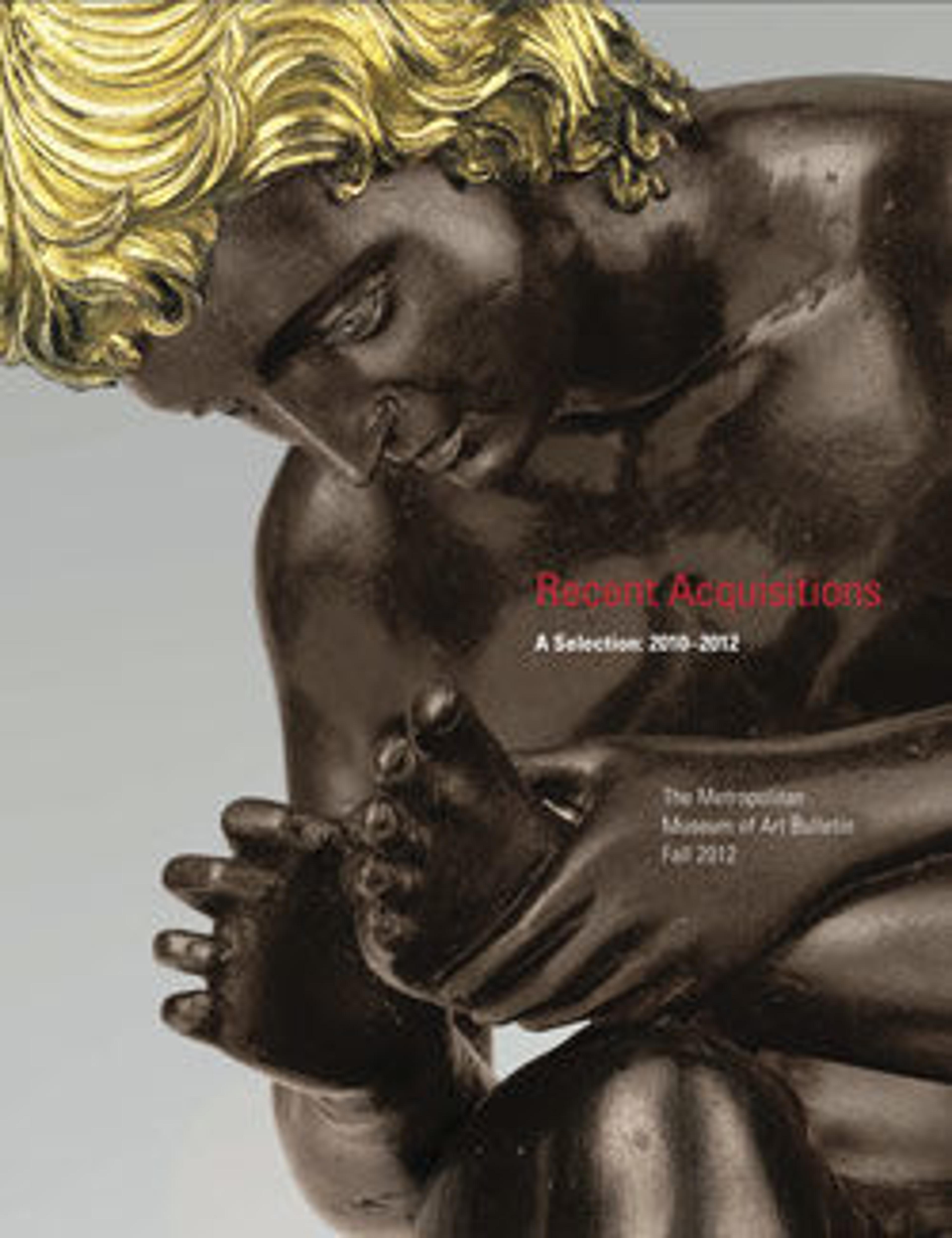Flintlock Sporting Gun of Empress Margarita Teresa of Spain (1651–1673)
This flintlock sporting gun was made in Vienna for Empress Margarita Teresa (reigned 1666–73), Infante of Spain and wife of Holy Roman Emperor Leopold I (reigned 1658–1705). The empress's crowned monogram in silver is inlaid on each side of the butt, and her arms, an imperial double-headed eagle bearing the shields of Austria and Spain, are engraved on the silver escutcheon on the grip of the stock. The gun's august ownership is matched by the quality of manufacture. It is a work by Jacques (Jacob) Lamarre, a Parisian gunmaker who sought his forture at the imperial court about 1670.
This superb weapon is probably one of Lamarre's earliest Viennese works. It still retains a French character, notably the barrel, with its changing faceted and round sections; the lock, with its chiseled, pierced, and engraved ornament; a burlwood stock with distinctive marbled grain; and a classically inspired profile head in the style of Jean Berain the Younger (1640–1711) on the silver trigger guard. It compares to the finest French firearms of the period, examples of which were sought out by royalty and nobility throughout Europe.
This superb weapon is probably one of Lamarre's earliest Viennese works. It still retains a French character, notably the barrel, with its changing faceted and round sections; the lock, with its chiseled, pierced, and engraved ornament; a burlwood stock with distinctive marbled grain; and a classically inspired profile head in the style of Jean Berain the Younger (1640–1711) on the silver trigger guard. It compares to the finest French firearms of the period, examples of which were sought out by royalty and nobility throughout Europe.
Artwork Details
- Title:Flintlock Sporting Gun of Empress Margarita Teresa of Spain (1651–1673)
- Gunsmith:Jacques Lamarre (French, recorded Paris 1657–1700 Vienna, Austria)
- Date:ca. 1670–73
- Geography:Vienna
- Culture:Austrian, Vienna
- Medium:Steel, wood (burl walnut), silver, copper alloy, gold
- Dimensions:L. 52 1/8 in. (132.4 cm); L. of barrel 38 3/8 in. (97.5 cm)
- Classification:Firearms-Guns-Flintlock
- Credit Line:Purchase, Arthur Ochs Sulzberger and Irene Roosevelt Aitken Gifts, 2011
- Object Number:2011.354
- Curatorial Department: Arms and Armor
More Artwork
Research Resources
The Met provides unparalleled resources for research and welcomes an international community of students and scholars. The Met's Open Access API is where creators and researchers can connect to the The Met collection. Open Access data and public domain images are available for unrestricted commercial and noncommercial use without permission or fee.
To request images under copyright and other restrictions, please use this Image Request form.
Feedback
We continue to research and examine historical and cultural context for objects in The Met collection. If you have comments or questions about this object record, please contact us using the form below. The Museum looks forward to receiving your comments.
